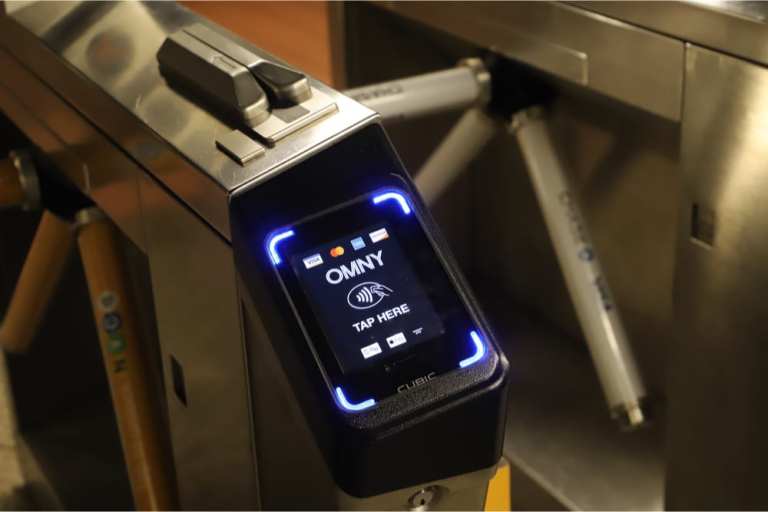
New Yorkers who were hoping the city’s public transportation network would soon accept contactless payment will have to wait.
The Wall Street Journal reported the Metropolitan Transportation Authority (MTA) had planned to launch its One Metro New York (OMNY) tap-and-pay fare system in October, but COVID-19 put the brakes on its installation.
As a result, the continued setup of the system for city buses and subways won’t be complete until year’s end.
OMNY allows users to pay fares with a tap of their credit cards, phones, or smartwatches above an electronic reader. The MetroCard vending machines will be retired in 2023.
Originally launched last year, OMNY is available at about half of the system’s 472 subway stations and on Staten Island buses, the report said. But until it’s available everywhere, there will be few users.
“Unless you have OMNY at both ends of your destination you’re not going to use OMNY,” Al Putre, the MTA executive responsible for implementing the new fare payment system told the WSJ.
MTA officials put the installation of digital readers at subway turnstiles on hold in late March because of fears workers could get the coronavirus, Steve Brunner, who leads the OMNY project for Cubic Transportation Systems, told the newspaper. Work resumed in May.
In the meantime, according to the report, the MTA is spending hundreds of millions of dollars to sanitize its network of subway, bus and rail systems, including the MetroCard vending machines, nightly as riders seek reassurance the system is safe.
When the contactless system is in place, readers will be installed at the front and back of vehicles, giving the MTA a way to debut a rear-door fare collection policy.
Mass transportation in the city is off by 80 percent, according to a report completed for the MTA, because schools and most businesses are shuttered. But the MTA expects ridership could rise to about 60 percent or 4.5 million daily riders after Labor Day.
Benefit Resource Inc., a New York-based company that provides tax-free benefits programs such as commuter benefit plans, introduced contactless cards at the end of last year.
“I think you will see a lot of riders demand this functionality to help keep themselves as safe as possible, as they think about how to get around any metro area using public transportation,” Jason Hall, the company’s CEO told the Journal.
He added the firm has about 100,000 customers who use its Beniversal card in the New York metropolitan region.